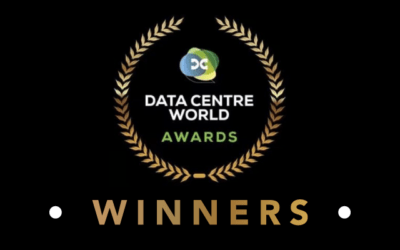Businesses are putting a lot of pressure onto IT teams to deploy new digital technologies which can provide staff and customers with the best possible experience. At the same time, you’re expected to be improving sustainability of IT systems. Thankfully sustainability and digital transformation aren’t opposing initiatives, and it’s possible for you to have a plan which will let you deliver on both of these goals. In fact, by focussing on the ways sustainability and digital transformation support one another, you’ve got an opportunity to excel with both, beyond what could be achieved by only focussing on one.
How sustainability supports digital transformation
1. Increase resilience and performance
Sustainable business practises will protect your business through difficult times. A report from Arabesque explains that sustainable practises protect a business from “litigation as well as environmental, financial and reputational risks”. Sustainability promotes proactive decision making, and factoring sustainability into your digital transformation will help deliver on one of the key aims of digital transformation: business continuity.
2. Attract and retain the best talent
The best team members are always those with the most passion. And as we become more aware of climate change, people – especially among younger generations – are growing more passionate about building a sustainable future.
Employees are starting to prioritise employers who have them working on projects that will have a positive impact on the world. If you can’t showcase your green credentials in job advertisements then recruiting new IT talent will be significantly harder. Whereas you’ll have your pick of potential candidates if you can show them that they’ll be working on sustainable projects within your business.
3. Futureproof your digital transformation
There’s one essential factor that is central to the success of sustainability: efficiency. Modern technologies, on both the software and infrastructure side of things, allow for highly efficient IT systems. With the rise of high-performance computing, it’s only a matter of time until your next digital transformation project requires running a power-hungry supercomputer.
Pursuing sustainability now will make it easier to launch new technologies in the future that require optimised and efficient technologies.
How digital transformation supports sustainability
1. AI and analytics build a sustainable future
Digital transformations supports new and advanced technologies like powerful data analytics and artificial intelligence. These are invaluable tools in building a sustainable future and contribute to the efficiency I mentioned earlier, regardless of your industry. It’s estimated that by 2030 AI will be saving $127 billion a year by eliminating waste related to food alone. Your company’s digital transformation is a fantastic opportunity to take advantage of these technologies to boost sustainability.
2. Improve energy efficiency
Consider how much more energy-efficient a new-build is compared to a house built in the ’60s. When technology improves it’s almost always accompanied by an increase in energy efficiency, and digital technologies are no exception. A large advantage of replacing your legacy digital systems with new technologies, regardless of the main objectives, is that it will also reduce the energy used by your data storage and processing.
In recent years the cost of energy has been volatile due to the changing price of fossil fuels, getting your energy consumption under control will help you manage your budget as well (it’s also a big reason why you should consider switching to a renewable energy supply).
How to build sustainability into your digital transformation
1. Prioritise efficiency in your IT and related systems
“Efficiency” – This word has come up again but it’s because it’s important.
Energy-efficiency, time-efficiency, efficiency for other resources, all of these will inevitably be improved with your digital transformation. But you should still be focussing on them when choosing between new digital technologies to maximise the environmental, budget, and business continuity benefits of efficiency.
2. Use new analytic tools to track sustainability comprehensively
Building sustainability into digital transformation isn’t just to do with what technologies you use, but also how you use them. Whatever new tracking and analytical tools you deploy, ensure they’re equipped to help you monitor sustainability throughout your business. This needs to cover how you run your IT, the services you deliver, as well as your supply chain, so that you’ve got a comprehensive view on where improvements could be made to reduce environmental impact and reduce costs.
3. Move away from running your own IT and towards “as-a-service” services
Sometimes a digital transformation plan, especially when it has ambitious goals, needs to overhaul the way a business runs and its business model. To build a resilient, reliable and sustainable digital system you might need to leave behind your on-premises IT.
Working with an MSP or managed infrastructure provider is an opportunity to pursue advanced digital technologies without having to expand your IT team. They will provide support and expertise, including how to build sustainability into your transformation. Additionally, hosting with an infrastructure management data centre will give you access to their sophisticated physical technologies, which will be highly energy-efficient.
If some extra resources to support your sustainability and digital transformation sounds like a good idea, get in touch to get a free consultation from one of our experts. Alternatively check out our green credentials to see how we’ve prioritised sustainability at the core of our business.



